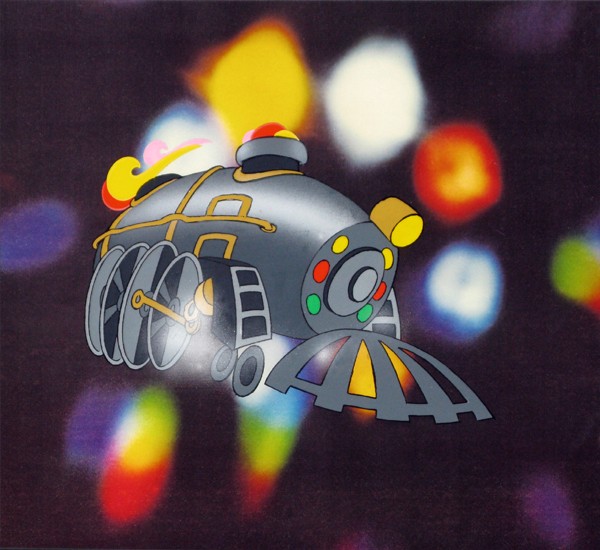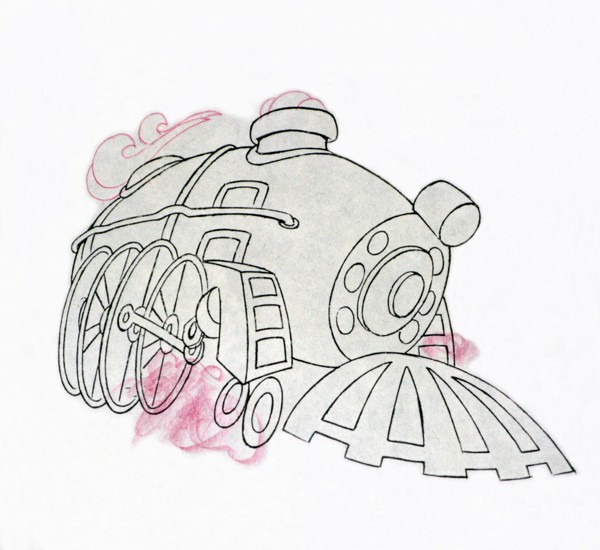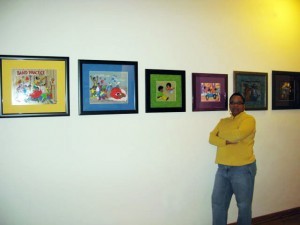The Museum Of UnCut Funk is honored to have had the opportunity to speak with LaShawn Williams from Soul Train.com about our Funky Turns 40: Black Character Revolution Exhibition traveling to the DuSable Museum in Chicago.
Chicago is an important stop on our Funky Turns 40 tour because it is the birthplace of Don Cornelius and Soul Train.
Soul Train premiered on WCIU-TV in Chicago on August 17, 1970, as a live show airing weekday afternoons. In 1971, it premiered in syndication and went on to become the longest-running first-run nationally syndicated program in American television history. It was also the first syndicated series to feature an animated opening created and produced by Black people. The animated train opening was conceived by Don Cornelius and created by Black animators. Don Cornelius was born in Chicago.
Q&A: Pamela Thomas and Loreen Williamson—Co-Curators, The Museum Of UnCut Funk
For folks of a particular age, the mere mention of Saturday morning cartoons evokes nostalgia; whether you jammed with The Jackson 5ive or hooped with The Harlem Globetrotters, cartoons were simply synonymous with childhood. In their traveling and virtual museum exhibit, “Funky Turns 40: Black Character Revolution Exhibition,” curators Pamela Thomas and Loreen Williamson take viewers on a “funky” trip through time, as they explore the significance of the history of black animation in the 70s. SoulTrain.com spoke with them about the overall exhibit, Soul Train’s role in the exhibit, and why animation deserves a place in our culture.
SoulTrain.com: When and how did the idea come together for this exhibit?
Pamela Thomas: It’s been a couple of years in the making. We were former gallery owners and through that gallery, we had access to all different types of art. When I initially met Loreen, she had a very interesting collection of animation art that was more focused on Warner Brothers and Looney Tunes and my first question to her was, “Where are all the black cartoons?” One thing led to another and we started to do some research and we finally made a connection with some collectors, art dealers and gallery owners and were able to score some black animations. From there, after closing our gallery, I had this idea that I wanted to continue to be an entrepreneur and we decided to develop The Museum of Uncut Funk to really house our collection, curate this exhibition and go out and pitch it to museums.
SoulTrain.com: While you were curating, did you face any challenges with licensing or rights?
Loreen Williamson: We owned it so it wasn’t as much as a rights issue but where we did run into a little bit of difficulty was convincing museums that animation is a worthy form of art because it’s not the typical kind of art that you would see in a museum nor is it considered “fine art.” It was just selling museums on the story and history behind the art and the significant change in the way black characters were drawn and depicted.
SoulTrain.com: The exhibit just wrapped up at the Schomburg Center for Research in Black Culture in New York and will debut in Chicago’s DuSable Museum of African American History in late June; in addition, it has been profiled in the national press. What has the feedback been like?
Pamela Thomas: It has been phenomenal. I don’t think in my wildest dreams you could’ve told me that we would have gotten the responses we got. The press has been unbelievable; we’ve been on different newscasts and newspapers. From what has been said, it was a success at the Schomburg, even more so than they anticipated.
SoulTrain.com: The exhibit captures the 70s era of blacks in animation; however, you’ve noted how cartoons in the 40s and 50s were full of stereotypes. “Mammy Two Shoes,” the recurring character from the Tom and Jerry shorts, immediately comes to mind. Could you speak about her?
Loreen Williamson: That was probably one of the more positive depictions. It’s interesting that you have this grown woman shown with Tom and Jerry and you don’t ever see her face. You see the gigantic breasts and slippers and socks but you have to think about how deep that is for a second—how black people in cartoons prior to the 70s weren’t even real people. There was a great love by the animators of our jazz musicians and even when the depictions were of a real person—even when they were paying homage to the greatness some of those artists—they still weren’t depicted as human. They were some combination of say, Cab Calloway’s face with a frog’s body or something. So, when you think about it, it really brings it home.






0 Comments